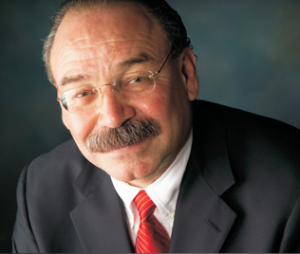Texas Democrats Set To Elect First Hispanic Leader
 By Pete Litterski, Voxxi
By Pete Litterski, Voxxi
Actually, he sees a two-fold challenge: “I think the problem I have is coming to the job with just five months before an important election. We have to get ready for the election and I have to reorganize the organization. Normally, you’d want a year just to do one of those jobs.”
Hinojosa, who faces what is considered token opposition, is already gearing up to take over from Boyd Richie at the June 8-9 state convention in Houston. Unless there is a last-minute surprise, he will become the first Hispanic leader of the Texas Democrats in a state where 40 percent of the population is Hispanic.
The 59-year-old lawyer from Brownsville believes his most important job is going to be finding a way to engage Hispanics to first get them registered and then get them to the polls in November and the years to come. Hinojosa believes the demographics of his state lean in the Democrats’ favor, but only if Hispanic Texans get involved in voting.
“Hispanics make up the largest part of the Democrats’ base in Texas. When they do vote, they vote at much higher percentages for Democratic candidates,” he says.
But with a little more than half of the eligible Hispanic voters registered and low turnout even among the registered voters, the impact of Latino voters lags far behind their potential.
In Texas, the Republican Party attracts a strong majority of the Anglo vote, but the state’s white population slipped below 50 percent several years ago and Texas’ surge in population since the turn of the century has been driven by minorities, particularly by Hispanics.
That might bode well for the Democrats, Hinojosa says, but only if the party can get those voters engaged.
“If 40 percent of the Texas population is Hispanic, then they make up almost 60 percent of our base … the largest part of the Democratic base,” Hinojosa says. “But if they’re voting in the low 20’s, then that’s where your problem is.
“What would happen if that base had turned out another 10 percent in 2010? Then Bill White would have been governor,” instead of Rick Perry. White is the former mayor of Houston who lost to Perry.
Ten percent might not sound like much of a hurdle, but Hinojosa says, “That challenge is going to be difficult to meet in just five months.”
In the past, he says, Democratic activists have tried a variety of ways to pull Texas Hispanics to the polls. They have used television advertising, direct mail campaigns, and intensive blitzes just 30 days before elections. Still, the best they have been able to do is attract turnouts in the mid 30’s, effectively ceding political clout to the GOP’s Anglo base.
“African-American turnout is way up there compared to Hispanics. So are Asians,” Hinojosa said. Both of those minority groups vote strongly Democratic, but their numbers are not sufficient to overcome the GOP’s base. If his party wants to turn the partisan tide in Texas, it will be up to the Hispanic voters.
“You have to engage this community. Engaging this community requires a lot of time, a lot of effort. You’ve got to make Hispanics want to vote and to do that you’ve got to speak to them in a real way. You have to speak to them about the issues that make them mad.
“You can’t look at it as single issues like immigration. That’s big in Dallas or Harris Counties, but here in the Valley and in West Texas, there are other major issues.”
Hinojosa cited education and women’s health care that are major issues to the working class Hispanic voters in the rural Rio Grande Valley and many corners of Texas. He says the cutbacks in funding by the Republican Gov. Rick Perry and the GOP-dominated Texas Legislature are the kind of issues that can be used to stir Hispanic voter interest.
One of the most effective routes to the kitchen tables of average Hispanic voters may be through their children, Hinojosa believes. The Texas Democrats’ Promesa Project is an outreach program targeting young voters on Texas campuses both face-to-face and through social media. He sees that project as an opportunity not only to get the burgeoning young Hispanic generation involved, but to turn them into emissaries to their parents and grandparents.
Hinojosa knows that time is an issue as he tries to stir support for Democrats in several statewide races and some key district-level races in November, but he says the effort will be worthwhile.
The Democratic leader would like to build interest in the return of veteran Texas Legislator Paul Sadler to the political arena. Sadler, who played a key role in many education funding reforms in the 1990s, is making a run for the U.S. Senate after a decade away from politics and will likely top the Democratic ballot in this year’s election. Hinojosa says the former state representative stands heads above any of the four leading candidates in the vitriolic GOP Senate primary.
Pete Litterski is a freelance writer and author living in Longview, Texas. He was a editor, columnist and editorial writer over a newspaper career that spanned more than 30 years. He was the editor of the Longview News-Journal in East Texas for 10 years before moving into the role as senior editor for five more years with responsibility for the daily Opinion Page, the Sunday Focus section and an AnswerLine column. He wrote a weekly news column on local and Texas political issues as well as five editorials per week addressing everything from city park bond elections to the restructuring of Texas public school funding.
This article first appeared in Voxxi.
[Photo courtesy Gilbertohinojosa.com]
